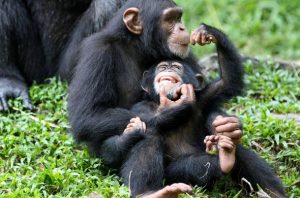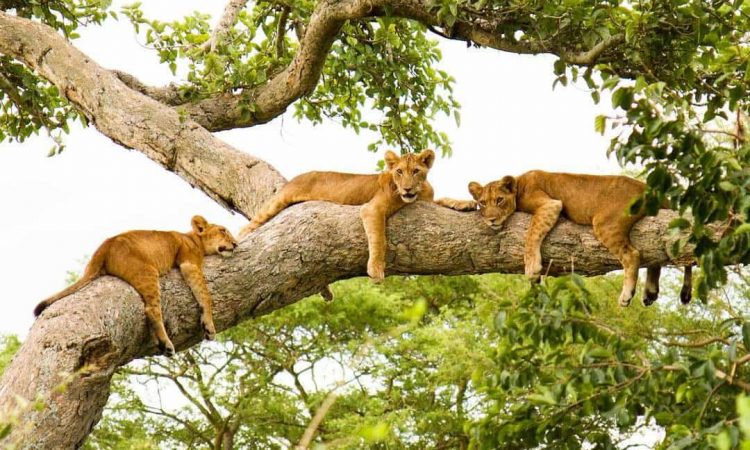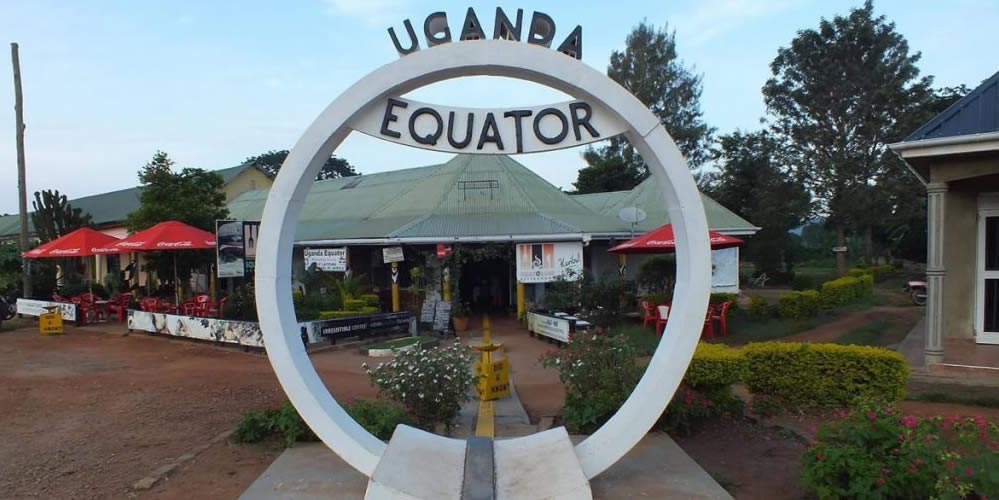6 Days Chimpanzee and Gorilla tracking, Batwa community, Boat cruise on kazinga channel.
Gorilla trekking is an outdoor activity where tourists are allowed to see mountain gorillas for one hour after purchasing a gorilla permit in Uganda and or Rwanda. Traveler’s bucket list is gorilla trekking in the tropical jungles of Uganda and Rwanda. has been in the forefront of creating unforgettable memories of seeing the mountain gorilla in the last decade and we celebrate this achievement by continuing to take our travelers through thick, misty, wet and impenetrable jungles and Rwanda’s Volcanoes to spend those memorable 60 minutes with the mighty giant cousin and his family.
We specialize in preparing gorilla trekking safaris in Uganda and Rwanda. Check our blog for first hand information on gorilla permits prices and availability, which gorilla family you should track, when is the best time to visit mountain gorillas, what to pack, how to get there and what should be the best choice of accommodation. Take a private or group gorilla safari depending on your budget, include something else on the trip like a classic wildlife safari or take a shorter route through Kigali in Rwanda—choosing the best destination route is quite important for a great gorilla tracking trip.
Chimpanzee trekking.
Chimpanzee trekking is one of the best activities that is sought after by many tourists who come to Uganda. Just like gorilla trekking, it involves trekking through the forest in search of the chimpanzees that keep on swinging from one tree to the next. Trekking might take a few hours or less but once you get to the chimpanzees, every group gets to spend an hour with them before trekking back to the camp.
 There are several chimpanzee destinations in Uganda and each one of these has a group of chimpanzees that you can trek. Chimpanzee trekking is mainly done in the Kibale Forest National Park and other destinations where you can go for the chimpanzee trek include the Budongo forest which is found in the Murchison Falls National park, Kyambura gorge in the Queen Elizabeth National Park, Semuliki wildlife reserve, and Kalinzu forest found in Busenyi.
There are several chimpanzee destinations in Uganda and each one of these has a group of chimpanzees that you can trek. Chimpanzee trekking is mainly done in the Kibale Forest National Park and other destinations where you can go for the chimpanzee trek include the Budongo forest which is found in the Murchison Falls National park, Kyambura gorge in the Queen Elizabeth National Park, Semuliki wildlife reserve, and Kalinzu forest found in Busenyi.
Chimpanzee trekking starts very early in the morning and every trek begins with the tour guides giving tourists the guidelines and rules that need to be followed. While trekking, you will be able to see other primates and wildlife like the red-tailed monkeys, black and white colobus monkeys, a variety of bird species among others.
Chimpanzee Trekking Permit
A chimpanzee trekking permit is a legal document that will give you access to the chimpanzees. They are processed by the Uganda wildlife Authority and they still remain the property of the Republic of Uganda even after being issued to you. Just like the trekking permit for gorillas, limited permits are printed per day and these are only valid for the date that they have been printed. The reason as to why few permits are printed is to try as much as possible to reduce the interaction between the chimpanzees and humans to conserve them. The chimps are prone to diseases and that is why interaction is limited.
The best way for one to get a chimpanzee trek permit is by booking through a trusted tour operator. Local tour operators know more about the process of booking and other related costs so it is better to let them take up the planning process. The tour operators will book the permit at the Uganda wildlife Authority and once payment is done, a scanned copy will be sent out to you via email with details on when you are to trek, the time, your name, passport details, and the unique serial number that makes it unique from the rest. Note that these permits cannot be interchanged and it is also hard for you to get a refund if you do not make it.

Queen Elizabeth National Park is understandably Uganda’s most popular tourist destination. The park’s diverse ecosystems, which include sprawling savanna, shady, humid forests, sparkling lakes, and fertile wetlands, make it the ideal habitat for a classic big game, ten primate species including chimpanzees, and over 600 species of birds.
The Bwindi Impenetrable Forest is home to some of the greatest biodiversity on the planet, a profusion of exotic plants and animals that includes the endangered mountain gorilla. For thousands of years, the forest was also home to an indigenous people—the Batwa pygmies.

The Bwindi Impenetrable Forest is home to some of the greatest biodiversity on the planet, a profusion of exotic plants and animals that includes the endangered mountain gorilla. For thousands of years, the forest was also home to an indigenous people—the Batwa pygmies.
As the original dwellers of this ancient jungle, the Batwa were known as “The Keepers of the Forest.” The history of these small-statured people is long and rich. The Batwa survived by hunting small game using arrows or nets and gathering plants and fruit in the rain forest. They lived in huts constructed of leaves and branches, moving frequently in search of fresh supplies of food. The Batwa lived in harmony with the forest and its creatures, including the mountain gorillas, for millennia. Some anthropologists estimate that pygmy tribes such as the Batwa have existed in the equatorial forests of Africa for 60,000 years or more.
In 1992, the lives of the Batwa pygmies changed forever. The Bwindi Impenetrable Forest became a national park and World Heritage Site to protect the 350 endangered mountain gorillas within its boundaries. The Batwa were evicted from the park. Since they had no title to land, they were given no compensation. The Batwa became conservation refugees in an unfamiliar, unforested world.
Many Batwa died during the early years of exile, and the tribe’s very existence was severely threatened. Beginning in 2001, American medical missionaries Dr. Scott and Carol Kellermann dedicated themselves to serving the Batwa in southwest Uganda for nearly a decade. The Kellermanns purchased land and established programs to improve conditions for the tribe—home-building, schools, a hospital and clinics, water and sanitation projects, income generation, and the promotion of indigenous rights.
These activities are now being assumed by the Batwa and other local staff through the Batwa Development Program (BDP). It is supported by the Kellermann Foundation, a US-based nonprofit organization.
Itinerary for a 6 Days Safari
| Day | Activity | Meal plan and lodge |
| Day 1 : | Drive to Kibale forest – evening bigodi nature walk. | Isunga lodge |
| Day 2 : | After breakfast – Chimp trekking – | Isunga lodge |
| Day 3 : | After breakfast, drive to Queen Elizabeth National Park – boat ride on the Kazinga Channel. – dinner and overnight | pumba Safari lodge |
| Day 4 – | After break- fast – morning game drive – Transfer to Bwindi National park | Rushaga haven Gorilla |
| Day 5 – | After breakfast – Gorilla tracking – evening batwa community. | Rushaga haven Gorilla |
| Day 6 – | After breakfast – transfer back to Kampala | To your residence |
What is included?
- 4×4 safari vehicle with Fuel
- 5 nights’ accommodation
- Bottled drinking water
- Park entry fees.
- Chimpanzee and Gorilla tracking permits
- Boat cruise
- Morning and Evening Game drives
- All meals as mentioned in the itinerary
- Professional driver guide
Round trip pick up and drop off at desired destination.

